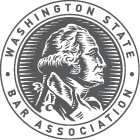2024 Comprehensive Membership Study
Who are we as a legal community in Washington state? Not just in terms of statistics that are easily counted—practice area, age, ethnicity—but also the less quantifiable individual experiences that, collectively, form the culture of our profession?
That question is central to the WSBA’s mission “to serve the public and members of the Bar, to ensure the integrity of the legal profession, and to champion justice.” We cannot support and strengthen the legal profession without understanding the makeup and experiences of Bar members. We cannot advocate for equitable outcomes for all without addressing the wide gulf in representation between Bar members and the diverse communities who need legal help.
With these goals in mind, the WSBA committed to a comprehensive membership study every 10 years as the foundation of a plan to advance a more diverse, inclusive, and equitable legal profession. Our first such demographic study was in 2012, resulting in a landmark Diversity and Inclusion Plan in 2013. For the first time, the WSBA in that plan outlined a wide-ranging, data-driven, long-term pledge and accompanying action steps to drive its equity work.
And as promised in that original plan, we returned a decade later to conduct another comprehensive membership study as the foundation of our work to create a more diverse legal profession where everyone feels they belong. The results and findings were a critical component that shaped the 2025 Equity and Justice Plan, a roadmap with three key focus areas that will drive resources and action in the coming years with the ultimate goal of ensuring the legal profession reflects the communities we serve.
Below are some key takeaways from the 2024 study. Read the November 2024 article in Washington State Bar News magazine and watch “Cultivating A Thriving Profession: Insights from Our Membership Study” for more in-depth information.
Five Key Findings
- The WSBA membership is becoming increasingly more diverse over time, though progress is slow. Our profession still does not reflect the diversity of our state population.
- The lack of diversity exacerbates professional barriers and personal issues specific to members from marginalized and underrepresented communities.
- On average, workplace evaluations are fairly positive. However, members from marginalized and underrepresented communities are less likely to report positive, satisfying, or accommodating workplace environments.
- Nearly all members report a lack of diversity and inclusion in their workplace—but the negative impacts of workplace environments aren’t distributed equally.
- Members of dominant groups are least likely to face negative consequences for reporting injustice but fail to notice the frequent negative workplace experiences of those from marginalized and underrepresented communities.
Frequently Asked Questions
How was the membership study conducted?
The study was conducted by KGR+C (aka Kno-Why), an independent research consulting firm that did a similar study for the Oregon State Bar in 2019. The consultant conducted a comprehensive, mixed-method (quantitative and qualitative) study of the demographic composition of WSBA membership and experiences in the workplace and profession. The study began with a membership-wide survey (sent to almost 40,000 WSBA members) that included questions focused on identity-based demographics such as age, race and ethnicity, gender, sexual orientation, and disability, as well as years of practice, practice area, setting and size, workplace satisfaction and loyalty, perception of current work environment and experiences of bias, stereotypes, and microaggressions. There were 1,857 completed responses to the survey—97 percent lawyers, 1 percent LLLTs, and 2 percent LPOs. Following the survey, the consultant conducted confidential focus groups of members with identities that were most underrepresented in the survey. The focus groups allowed the consultant to listen and learn from members' stories, interpretations, and perspectives, which inform the survey data and provide a more complete picture for the study.
Why is it important to measure membership demographics and experiences?
Understanding the composition of Bar members helps us analyze the relationship between the legal profession and the wider public, including tracking disparities in representation. Beyond diversity, it is also important to understand experiences of equity, inclusion, and belonging among Bar membership. A comprehensive membership survey allows the WSBA to understand how members with non-dominant identities experience workplace satisfaction, microaggressions, and sense of fit. Because bias and lack of belonging reflect systemic issues, a large-scale data analysis allows us to understand how widespread they are; how they manifest; and, most importantly, where and how to intervene to promote a more inclusive profession and legal system.
When some people in a group (like the legal profession in Washington, for example) don’t feel welcome or adequately supported, everyone in that group is affected. When diversity and inclusion are stifled, legal professionals—especially ones from underrepresented communities—may choose to leave the profession, which results in a reduction in workplace retention. Fewer people in the legal profession may result in higher workloads for those who remain and potentially diminish work quality and increase unmet legal needs. This may result in a reduction of public trust of the legal profession and the legal system and may deter people from joining the profession. A smaller legal profession that does not represent the diversity of the public may overburden our legal system and exacerbate systemic problems. Therefore, it is important to understand our makeup and the experiences of our members so we can disrupt this cycle and create a thriving profession that is accessible and where everyone feels they belong.
The video above is presented for informational purposes only. To view this video for CLE credit please register here. This product will be available for free through Sept. 30, 2025.
Learn More:
- 2024 WSBA Membership Study, published in Washington State Bar News
- 2025 Equity and Justice Plan
- Membership Study 2012






